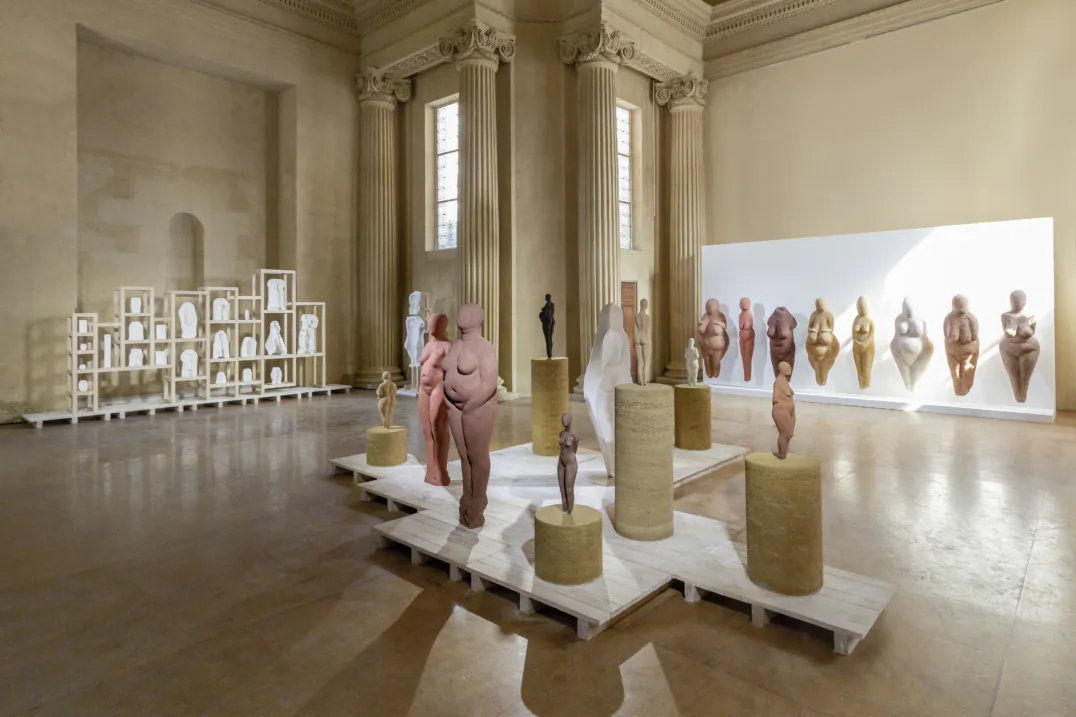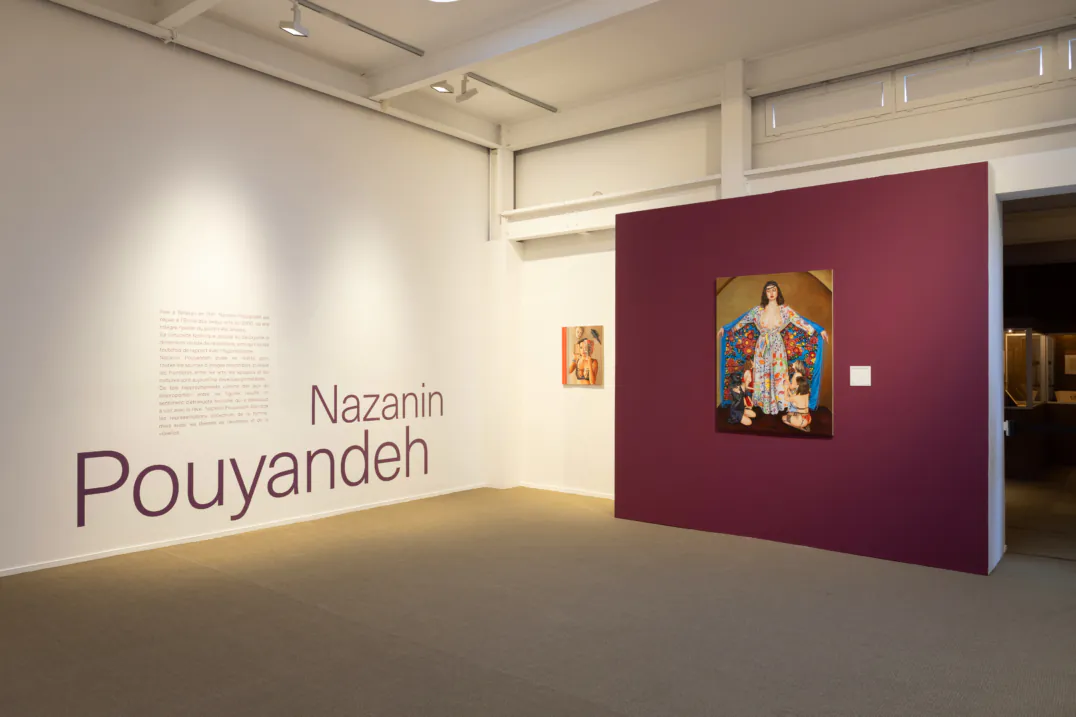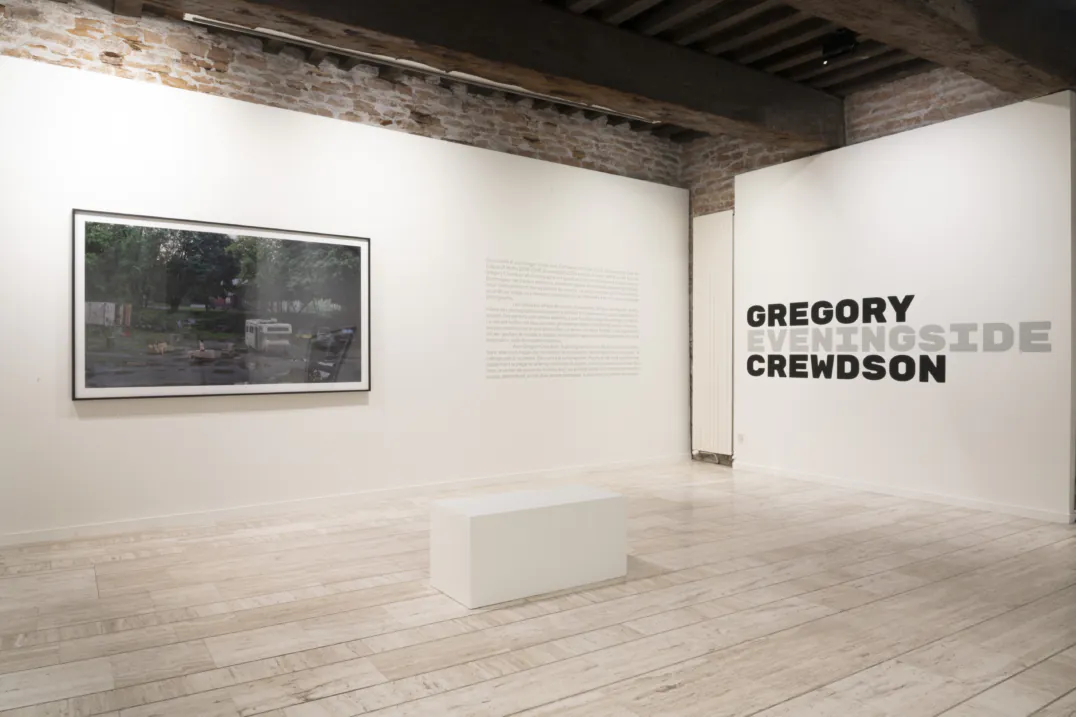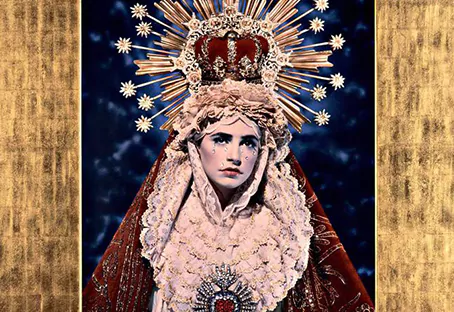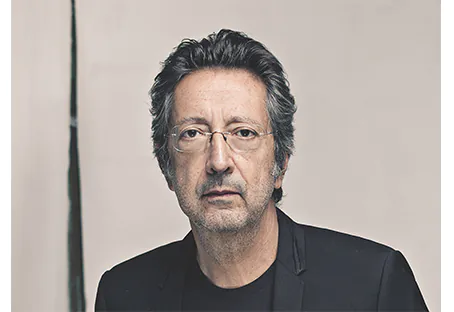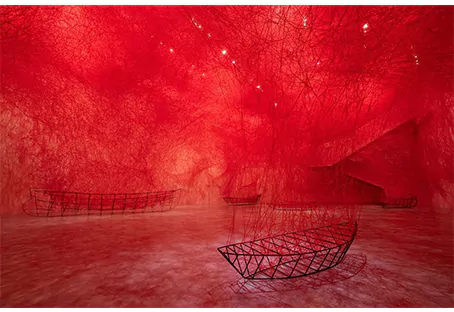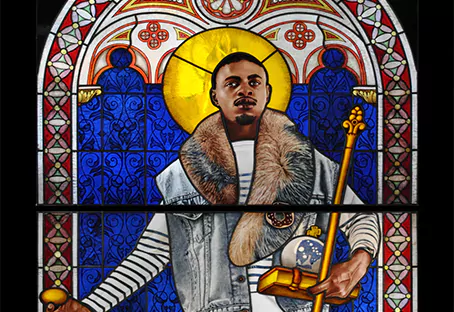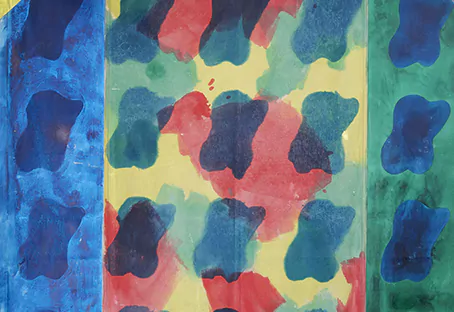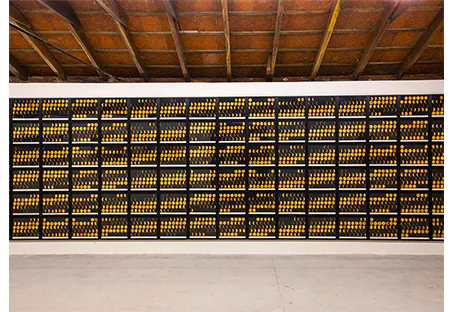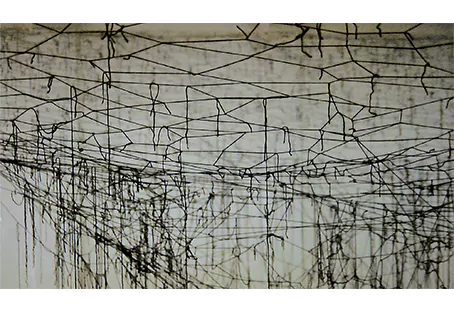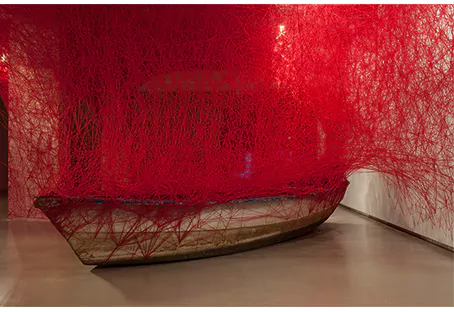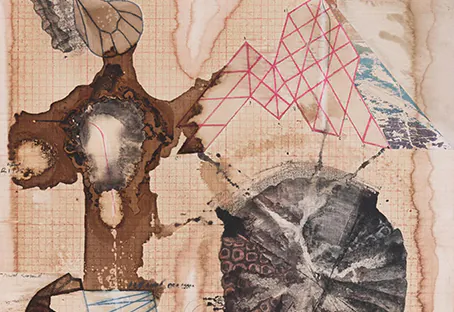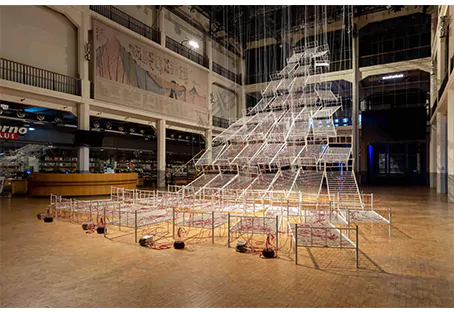News
Pierre et Gilles
« ICONS » – GROUP SHOW
Boghossian Foundation
Villa Empain, Brussels
From May 6 to October 24, 2021
The exhibition shows a selection of ancient icons from Europe and Russia – depicting variously Christ, the Mother of God, or individual saints – the striking simplicity of which sets them apart as timeless objects of veneration. A second set of works by 19th and 20th century artists such as Pierre et Gilles, Charles Filiger and Lucien Levy-Dhurmer explores the frontal and depth-less composition of icons. The exhibition also discusses the use that contemporary artists like Yan Pei-Ming and Wim Delvoye make of iconographic language.
Julião Sarmento
JULIAO SARMENTO (1948 – 2021)
Photo: pf.Elle.J
It is with great sadness that we announce the passing of Juliao Sarmento, yesterday May 4, in Lisbon.
Born in 1948, Juliao Sarmento was a major figure of Portuguese art from the 1970s onwards. He was among the first of his generation to achieve wide international recognition, exhibiting in numerous prestigious museums (including the Tate Modern in London, the Centro Contemporáneo de Malaga in Spain, the Contemporary Arts Center in Cincinnati and the Fundaçao Serralves in Porto). Throughout his life, he carved a place for himself among the great thinkers and artists of contemporary art. His work explored the terrain of desire and representation in an approach combining painting, video, sound and visual installations. Exploiting a huge variety of combinations, Sarmento created an oeuvre with recurring motifs: the archetypal woman, modernist architectural images, plant-like lines, references to literature and the cinema. A large part of his work addresses issues of fragmentation, the gap between the real and fictional.
Fluent in French and a lover of French culture and cinema, Juliao Sarmento was widely admired in our country, where his work was the subject of many museum exhibitions, including Pompidou, MAMAC in Nice or most recently the Gulbenkian Foundation in Paris.
A passionate artist, Juliao Sarmento radiated with relentless curiosity and fierce energy. Profoundly humane and generous, he we will greatly missed.
Our thoughts are with his family.
Chiharu Shiota
THE SOUL TREMBLES – SOLO EXHIBITION
Taipei Fine Arts Museum
No. 181, Sec. 3, Zhongshan N. Rd., Zongschan Dist., Taipei City, Taiwan
From May 1st to August 29, 2021
“The Soul Trembles” is the largest exhibition devoted to the internationally active artist Chiharu Shiota. On display are some one hundred works ranging from her 1990s output to her latest pieces. In addition to large-scale installation, there are sculptures, performance videos, photographs, drawings, and materials related to her stage design projects.
Among these works are large-scale installations in which black and red threads run through and envelop the entire space, constituting one of her most representative artwork series. The countless lines traced out in thread allude to various phenomena and a complex array of links and connections, while also beckoning us towards the deepest reaches of existence. At the root of these works lie Shiota’s incessantly-pursued themes of life and death, as well as a fundamental inquiry into what we all pursue in life, and where we are heading.
The subtitle of this exhibition, “The Soul Trembles,” refers to the emotional stirrings of the heart that cannot be put into words, in addition to being a manifestation of thoughts the artist hopes to convey to others.
Kehinde Wiley
NEW ACQUISITION – SAINT ADELAIDE, 2014
The Stained Glass Museum
South Triforium, Ely, Cambridgeshire (UK)
It is the first stained glass artwork designed by Kehinde Wiley to enter a public art collection in the world. The title and pose of Saint Adelaide derives from an original 19th century stained glass window depicting the 10th century saint and consort of the Holy Roman Emperor Otto I in the Royal Chapel of St Ferdinand, Paris. In Wiley’s stained glass artwork, the figure of the female saint is substituted for Brooklyn model Mark Shavers – a young black man wearing pale jeans, a stripy jumper and gold trainers, with a fur around his neck.
It is one of three stained glass artworks (Saint Adelaide, Saint Remi and Saint Amelie) inspired by historic stained glass in this chapel designed by French painter Jean Auguste-Dominque-Ingres and made at Sèvres.
Claude Viallat
SUPPORTS/SURFACES : VIALLAT & SAYTOUR – GROUP SHOW
Musée National d’Histoire et d’Art
Marché-aux-Poissons L-2345 Luxembourg
Until August 29, 2021
In this exhibition important acquisitions from recent years are shown, focusing on works by two founding members of the Supports/Surfaces movement: Patrick Saytour and Claude Viallat. As a representative of the Nouvelle Peinture, Claude Viallat focuses on the primary and structural elements of painting: the canvas, the colour and the surface. Since 1966, he has been working on colour, which is both the subject and the object. The stretcher disappears. The free canvas is painted and against this background of colour, Viallat places stencil prints, repeatedly and in series. Most of the works presented here show that for him color is elementary to convey the repeated forms that lend his art coherent dimensions and rhythm, so characteristic of Supports/Surfaces.
Jitish Kallat
“LOKAME THARAVADU” – GROUP SHOW
Kochi Biennale Foundation, Alappuzha, Kerala, Inde
From April 5 to June 30, 2021
Lokame Tharavadu (The World Is One Family) is a large-scale curated contemporary art exhibition of Malayali artists, organized by the Kochi Biennale Foundation. Over 260 artists will be exhibiting a collection of their works, to foreground each of their practices. Jitish Kallat presents in this exhibition “Epilogue” (2011) in which the artist memorialises the life-time of his late father by picturing the approximately 22 000 moons that he saw during his lifetime. Strructured in monthly slots for each year, the moons are represented by “rotis breads”, the edges of which grow or crumble away as the moon waxes and wanes. The “roti moons”, a recurring pattern in the artist’s work, distill lived time into its essential components—the daily bread, the recurring routine—even as they connect it to a shared, eternally recurring celestial phenomenon. At the end of the path, the viewer is invited to walk with Kallat as he retraces his father’s life, a poignant frame with a lone moon, representing the night before 2nd December 1998, when the artist’s father died.
Chiharu Shiota
DIRECTION OF CONSCIOUSNESS – SOLO EXHIBITION
Domaine de Chaumont-sur-Loire, France
From April 2 to November 1, 2021
Chiharu Shiota presents her first solo exhibition at Chaumont-sur-Loire. She has created spaces that are bereft of any human presence, of any physical presence but where threads of memory, symbols of time are woven into a web that links inert objects to the past, to moments, to presences that now only exist in memory.
Chiharu Shiota
CHIHARU SHIOTA « MEMORY OF WATER » – PERMANENT WORK
April 1st, 2021
Towada Art Center, Aomori, Japan
For the 10th anniversary of the prohect “Arts Towada” that transforms the city into a museum of art, the Towada Art Center is replacing his permanent artwork and displaying the deposited works for the first time since its opening. On this occasion, Chiharu Shiota will unveil the work “Memory of Water” on April 1st, 2021. This is part of a series of work using boat and threads that has been presented in other exhibitions in Japan and around abroad. It is Chiharu Shiota’s first permanent work in a public museum of art in Japan.
Jitish Kallat
« SPRING » – GROUP DISPLAY
Fondation Thalie, 15 rue Buchholtz 1050 Brussels, Belgium
From April 1st to May 9, 2021
The Fondation Thalie presents “Spring”, a new display of her collection in Brussels with new acquisitions from Jitish Kallat, as well as Davide Balula, Le Corbusier, Francis Picabia, Jean Dubuffet, Hiroshi Sugimoto, Risaku Suzuki, Tatiana Trouvé, and Pieter Vermeersch, among others.
“Rebirth, buds and flowers, with this new display there is a desire to share the poetry and beauty of artwork that is usually shown in our homes.
This collection was started in 2008 and evokes “le sensible” around the question of know-how and gesture with regard to textile creations, which is a tribute to the legacy of Anni Albers, the worthy successor of the Bauhaus, who spent her entire career experimenting with weaving techniques as graphic paintings. (…).” – Nathalie Guiot, President of the Fondation Thalie.
Chiharu Shiota
“CONNECTED TO LIFE” – SOLO EXHIBITION
Zentrum für Kunst und Medium (ZKM), Lorenzstrasse 19, Karlsruhe (Germany)
From March 17 to July 11, 2021
Chiharu Shiota’s inspiration often emerges from a personal experience or emotion, which she expands into universal human concerns such as life, death, and relationships. The installation “Connected to life” consists of more than 50 hanging beds that cascade from the ceiling to the floor. The flow of life, which suddenly came to an end for so many because of the Corona virus with its many deaths, is present in the installation through the blood flowing through the tubes just as blood flows through the human body. Reminding us metaphorically that “the world today is a hospital” (Peter Weibel), the installation conveys a lightness that veils the weight of the subject.

